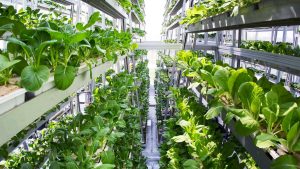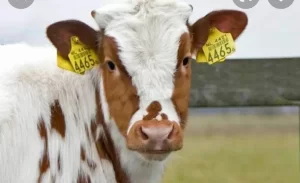Cultivating advanced ideas for the growth of agriculture
Human inventiveness, scientific breakthroughs, and technological advancements have given the world a pioneering array of tools to transform the food-growing system and alleviate its repercussions on nature and climate. Agriculture now is climbing the early steps of yet another revolution, at the heart of which lies digitization and data connectivity. The growth and advancement of sensor technologies in agriculture have led to more efficient, automated, and statistics-based processes. A person can now access all the information about the soil in which the crop was grown, what were the temperature conditions, and what pesticides used, just with a click. And the person growing the crop can manage the irrigation, pest control, and livestock just by clicking some buttons sitting far away. Agriculture is now taking the smart road.
Drones & Aerial Imagery
According to recent research, the global drone market within agriculture would grow at 35.9% CAGR and reach $5.7 billion by 2025. For efficient field planning, agricultural drones can be used to mount sensors to evaluate moisture content in the soil, terrain conditions, soil conditions, soil erosion, nutrient content, and fertility of the soil. They can help in effective crop surveillance by inspecting the field with infrared cameras and based on their real-time information, farmers can take active measures to improve the condition of plants in the field.
Soon, it is expected that budget-friendly drones will be used instead of huge tractors, as they emit harmful gases and pollute the environment in the process. They can provide accurate data about every stage of crop growth, and report any variations before they become a crisis. Multispectral images taken by drones can provide accurate information about subtle differences between healthy and unhealthy crops that may be missed by the naked eye. They can take pictures with a resolution down to a few cm per pixel. A drone can get higher quality and higher precision images in real-time as they can fly below the clouds. Besides, a satellite only takes pictures once a week or once a month.
Controlled environment agriculture
Despite half the world’s habitable land being used for agriculture, there is still a scarcity when it comes to food production in various regions. This is exactly why controlled environment agriculture (CEA) has become an integral new innovation. Controlled environment agriculture systems are designed to provide optimal growing conditions for crops and prevent disease and pest damage. They encompass a variety of systems that take a technology-based approach to farming. CEA can range from fully automated, closed-loop systems with controlled lighting, water, and ventilation to full indoor and vertical farms. CEA can minimize inputs such as water, nutrients, and chemicals, while also reducing the potential for food-borne pathogens, as well as saving on labour costs. automation techniques on the humidity, light, carbon dioxide levels, temperature, and nutrition are applied in the CEA system. These systems can also be placed in urban areas not suitable for traditional agriculture, bringing food production closer to consumers and making use of existing space. Hydroponics or soilless farming, Aquaponics which is a combination of hydroponics and aquaculture and Aeroponics where the roots of the plant extend in air and are sprayed with nutrient water mix from time to time are some of the widely spread applications of this system.
environment agriculture systems are designed to provide optimal growing conditions for crops and prevent disease and pest damage. They encompass a variety of systems that take a technology-based approach to farming. CEA can range from fully automated, closed-loop systems with controlled lighting, water, and ventilation to full indoor and vertical farms. CEA can minimize inputs such as water, nutrients, and chemicals, while also reducing the potential for food-borne pathogens, as well as saving on labour costs. automation techniques on the humidity, light, carbon dioxide levels, temperature, and nutrition are applied in the CEA system. These systems can also be placed in urban areas not suitable for traditional agriculture, bringing food production closer to consumers and making use of existing space. Hydroponics or soilless farming, Aquaponics which is a combination of hydroponics and aquaculture and Aeroponics where the roots of the plant extend in air and are sprayed with nutrient water mix from time to time are some of the widely spread applications of this system.
GIS software
Geographic Information System is designed specifically to capture, store, deploy, evaluate and present geographic data. It is all about analyzing the land, visualizing field data on a map, and then putting that data to work. GIS enables informed decisions and actions through which farmers get the most out of each acre without damaging the environment.
The applications include:
- Soil analysis- Determining the type of soil, what plants to grow in it, and how to maintain the nutrients present in the soil to benefit the plants.
- Agricultural mapping- mapping of the current features of a farm enables scientists and
 farmers to work together towards the same goal of creating more diverse, effective, and efficient farming techniques.
farmers to work together towards the same goal of creating more diverse, effective, and efficient farming techniques. - Precision farming- The sensors present in tractors, satellites, and in fields play a vital role in collecting data. Using Geographic Information System, the data collected can be put into data sets that can be accessed by farmers to study the land and crops for the future.
- Maps for land inventory– The geospatial data assembled can be used to determine whether the land in question is capable to support agriculture, wildlife, tourism and forestry among others.
Moisture Meters
Farmers need moisture meters to help them optimize their harvest. Quick measurement of samples in fields to determine their moisture content and whether they are ready for harvesting saves time. It also reduces the risk of buyer rejection due to improper moisture content and maximizes the sales price. The moisture content of the crops also helps in preparing the storage facilities for longevity to reduce crop spoilage. Moisture meters are also used for checking the moisture content of the soil. The most important factors in a moisture meter are accuracy, ease of use, cost, durability, and compatibility with different types of soil. The meter should be able to detect even minute changes in the moisture levels of the soil. The meter collects the info and relays it to the microcontrollers. Based on the dryness/wetness of the soil, the microcontrollers release and stop the water supply to the crops. Microcontrollers
harvesting saves time. It also reduces the risk of buyer rejection due to improper moisture content and maximizes the sales price. The moisture content of the crops also helps in preparing the storage facilities for longevity to reduce crop spoilage. Moisture meters are also used for checking the moisture content of the soil. The most important factors in a moisture meter are accuracy, ease of use, cost, durability, and compatibility with different types of soil. The meter should be able to detect even minute changes in the moisture levels of the soil. The meter collects the info and relays it to the microcontrollers. Based on the dryness/wetness of the soil, the microcontrollers release and stop the water supply to the crops. Microcontrollers
RFID
Radio Frequency Identification technology can be of great use in agriculture for environmental monitoring, irrigation, specialty crops, farm machinery, fruit harvesting, and packaging. Data collection in greenhouses is also possible with specialized RFID tags and readers, specially designed for warm and humid conditions. RFID can also keep tabs on illegal fishing and marine animals. They are tagged with the fish box which helps to assess catch date, location of catch, size, and quality, right there on the boat. RFID is the  earliest technology used for data recording and management of livestock. Implanting livestock with an RFID-enhanced microchip or ear tag would not only enable instant identification but also preserve a wide array of individual information such as body type, growth development, breeding lineage, and lactation quality. RFID tag records information such as humidity, light, wind speed, and rainfall during plantation and cultivation. By placing RFID tags on collars, cards, injections, pills, or just on agricultural products’ packages and determining the healthy condition of the product. It is convenient for processing enterprises to simultaneously add information on the tag. RFID has been inserted in many plants for different purposes like in Cactus to avoid theft, Citrus tree for monitoring disease and breeding, Cypress for disease monitoring, and grapevine for traceability and clonal selection.
earliest technology used for data recording and management of livestock. Implanting livestock with an RFID-enhanced microchip or ear tag would not only enable instant identification but also preserve a wide array of individual information such as body type, growth development, breeding lineage, and lactation quality. RFID tag records information such as humidity, light, wind speed, and rainfall during plantation and cultivation. By placing RFID tags on collars, cards, injections, pills, or just on agricultural products’ packages and determining the healthy condition of the product. It is convenient for processing enterprises to simultaneously add information on the tag. RFID has been inserted in many plants for different purposes like in Cactus to avoid theft, Citrus tree for monitoring disease and breeding, Cypress for disease monitoring, and grapevine for traceability and clonal selection.
Minichromosomal technology
This technology provides a way to add genes to a synthetic chromosome in a sequential manner. Agricultural geneticists can add dozens of traits to a plant using minichromosomes. These traits can be agronomically beneficial like drought-tolerant and improved nitrogen usage. Minichromosomal technology does not alter the plant’s genes in any way, resulting in faster regulatory approval and quicker acceptance by farmers. Telomere shortening, united with the introduction of site-specific recombination, which is when two molecules of DNA exchange pieces of their genetic material with each other, has proven to be an easy method to produce minichromosomes. Using tools such as gene assembly, genome editing, gene targeting, and chromosome delivery systems, it can be possible to engineer crops with multiple genes to grow more agricultural products using fewer natural resources. The induction of both Bt toxin and herbicide resistance genes from micro‐organisms into plants has changed agriculture with effective weed control and a decreased use of chemical pesticides. Arctic apples are the result of this technology and are among the first food crops to gain the attention of consumers with benefits like non-browning and protecting their flavour and nutritive value.
micro‐organisms into plants has changed agriculture with effective weed control and a decreased use of chemical pesticides. Arctic apples are the result of this technology and are among the first food crops to gain the attention of consumers with benefits like non-browning and protecting their flavour and nutritive value.
The success of any agricultural technology ultimately rests on the rate of adoption among farmers. They need to understand its benefits along with the shortcomings and then implement them as necessary. With the world population continuing to rise, the demand for the adoption of smart agriculture techniques is now inescapable.









